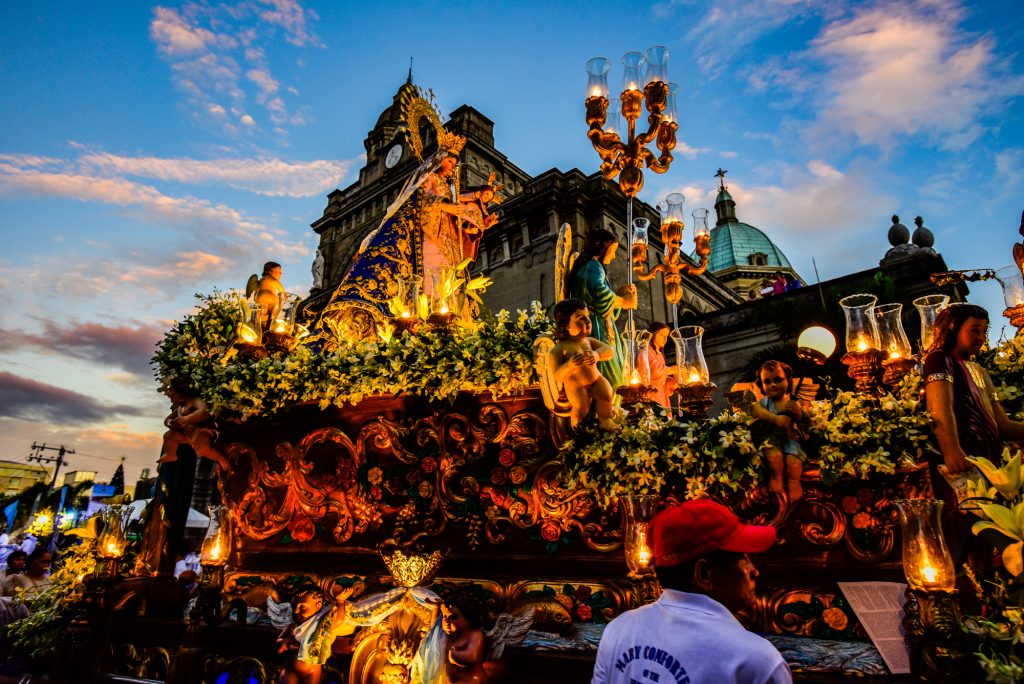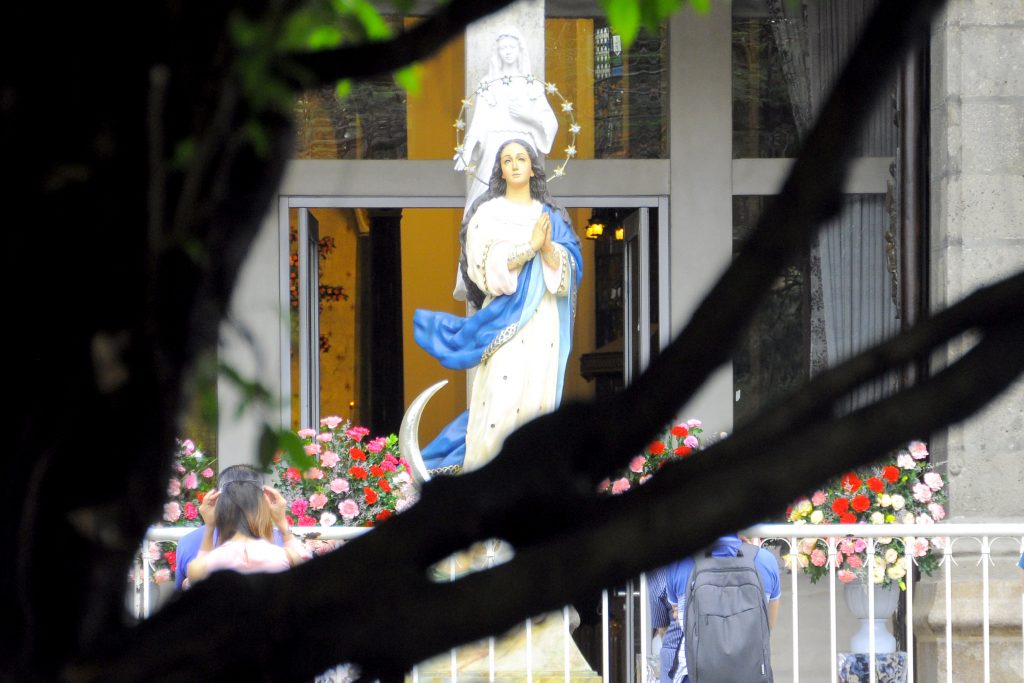
Filipinos marked the Feast of the Immaculate Conception this year amid strict health restrictions that prevented the holding of traditional religious processions.
In Manila, instead of the colorful, centuries-old annual “Grand Marian Procession,” a motorcade of images went around the Philippine capital, passing by several churches dedicated to the Blessed Virgin Mary.
“We wanted to have a march just like what we did last year, but there are restrictions now due to [the coronavirus pandemic],” announced the group Prolife Philippines.
In 2017, President Rodrigo Duterte declared the Feast of the Immaculate Conception every December 8 as a “special non-working holiday.”
In his message to the Filipino people, the president called for kindness to one another as the country continues to face challenges.
“Let us all draw strength from the holy life and example of the Virgin Mary so we may remain steadfast, joyous and hopeful amidst the many challenges we face today as a nation,” Duterte said in a statement.
“May her Immaculate Conception guide us all, whatever faith we may hold, to be kind to one another during these trying times as we look forward to a better future in this life and beyond,” he added.
“I wish everyone a solemn and meaningful observance,” said the president.

The Solemnity of the Immaculate Conception is a Catholic feast that marks Mary’s conception without sin.
Although the feast day occurs in the liturgical season of Advent, which prepares for the birth of Jesus Christ, the Immaculate Conception refers to the conception of Mary in the womb of her mother, St. Anne.
The dogma of the Catholic Church on the Immaculate Conception states that “from the first moment of her conception, the Blessed Virgin Mary was, by the singular grace and privilege of Almighty God, and in view of the merits of Jesus Christ, Savior of Mankind, kept free from all stain of original sin.”
The observance of the feast began with a papal encyclical by Pope Pius IX, when he formally defined the dogma of the Immaculate Conception, Ineffabilis Deus, on December 8, 1854.
In 1858, the Blessed Mother gave her name to St. Bernadette at Lourdes stating, “I am the Immaculate Conception.”

In the Philippines, where there is strong devotion to the Blessed Virgin Mary, the feast is celebrated with particular attention.
In 1942, the Virgin Mary, under the title of the Immaculate Conception, was declared “Patroness of the Philippines.”
In Manila, the celebrations traditionally start on the first Sunday of December when hundreds of images of the Virgin Mary are paraded inside the old walled city.
Organized by the Confradia de la Immaculada Concepcion, the religious procession usually features about a hundred images of the Blessed Mother from different parts of the country in what has been dubbed as the “grand Marian procession.”
A military brass marching band accompanies the procession of devotees who are mostly dressed in white as they parade around the old walled city of Intramuros.

The first Marian procession, held in Manila on Dec. 8, 1619, lasted for 15 days.
During the Spanish colonial rule that lasted for 300 years, the annual procession, which was supposed to promote catechism, varied between the days when the procession was held.
In recent years, the procession has become a showcase of the most prominent Marian images in the country even as church leaders warned that the procession is not about the beautiful dress or the carrozas of the image.
A carroza is the carriage, usually bedecked with flowers and candles, that carries the image of the Virgin Mary.
The annual feast of the Immaculate Conception is a holy day of obligation, meaning observing Catholics should attend Mass and avoid any nonessential work, to commemorate the Immaculate Conception of Mary.
Source: Licas Philippines
0 Comments